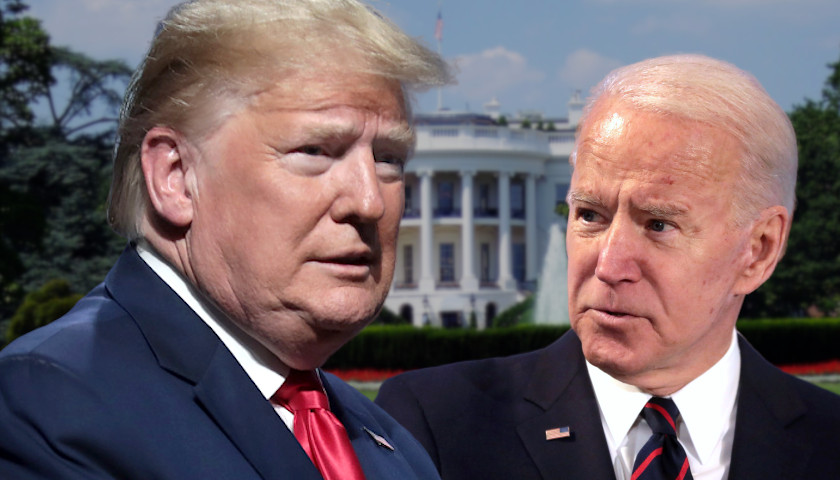by Angelo Codevilla
The Trump campaign alleges that massive voter fraud, especially perpetrated by computer software, is responsible for the widely published figures indicating Joe Biden won the presidential election. Consensus has spread from the Left, through the Republican establishment (e.g. the Wall Street Journal) to honest Tucker Carlson, that the Trump team has presented no proof and, absent that, must concede. But even the few who adhere to that consensus honestly do so based on neglect of law, facts, and even of the English language.
For Trump’s highly paid lawyers, there is no excuse whatsoever to submit to that expectation.
What follows is a dose of remedial reality. Pay attention.
Fraud, and its general methodology, was generally expected in this election. The Democrats’ successful demands for mail-in voting—which divorces millions of ballots from the individuals who may or may not have cast them and, simultaneously, from the lists of registered voters, and the counting thereof by computers programmed (and possibly reprogrammed) out of sight of competing monitors—guaranteed that fraud could happen and that ordinary recounts could not prove that it happened.
But the method and circumstances of 2020 could not and did not erase all evidence that presidential election fraud might have and probably did happen. The Trump campaign has produced various affidavits and pointed to methods and circumstances that raise suspicion—e.g., batches of ballots being run through machines multiple times and recording operations being shielded from observation by the erection of barriers and the removal of observers. Various other researchers have reported facts that raise vital questions about wholesale machine fraud.
Who programmed the Dominion voting systems in Georgia, Pennsylvania, Michigan and Wisconsin? Can those who did so and operated the systems on and after November 3 show convincingly that the numbers of votes they reported relate to choices made by real persons that correspond to names on lists of registered voters? Why is the discrepancy between results in the down-ballot races and the presidential race so great? What did the ballot dumps that did so much to change the presidential race do with regard to the other races?
None of this proves systemic machine fraud big enough to change the reported results. But neither are these facts irrelevant to the question.
Now, black letter law.
The Trump campaign are plaintiffs. They have no obligation to prove anything. Nor do they have the power to subpoena things, documents, and persons, nor to compel testimony that might be dispositive regarding the sufficiency of fraud. Nor do they have the right to adjudicate disputes any more than the press has the right or power to do so.
The plaintiff’s only burden is to establish in the minds of persons who are empowered by law to subpoena evidence, compel, testimony, etc. what the semi-sacred words of American law call “probable cause” that fraud may have been committed. These persons are courts, principally federal, as well as state legislatures that possess investigative powers, as well as the U.S. Justice Department. These institutions (other than Justice) are also the only ones that have the right to decide what constitutes sufficient proof of what.
The Trump campaign has spoken in ways that suggest that it can prove fraud. It cannot. Not as a matter of law nor, given its lack of subpoena powers and compulsive power, can it do so as a matter of fact. Giving that impression, it has tended to discourage the persons who should be seized by their duty to follow “probable cause” of fraud—and there is plenty of that.
The courts, historically, have been as partisan and as corrupt parts of the establishment as any other. Like others, they tend to decide without giving reason or trying to convince. But there is a hierarchy in courts. And at the top, the Supreme Court is under the greatest pressure to rule in a manner that tries to convince Americans that justice is being done.
Usually the Supreme Court refuses to act as a trial court, but dictates a result by telling the relevant lower courts to review the case according to criteria it specifies. Other times, it has decided a similar case (Bush v. Gore) more directly by deciding who has jurisdiction to do what and who does not. In the present case, yes, the Supreme Court can effectively validate or invalidate millions of numbers of votes. But it must try to give convincing reasons.
The country needs convincing reasons for accepting or rejecting these numbers. Why the establishment fears, or finds irrelevant and hence opposes that, is understandable. What is not understandable is why figures such as Sidney Powell and Tucker Carlson are not focusing on the relationship that American law commands between evidence, proof, and power. They should be focused, instead, on dealing with abundant “probable cause.”
– – –
Angelo M. Codevilla is a senior fellow of the Claremont Institute, professor emeritus of international relations at Boston University and the author of To Make And Keep Peace (Hoover Institution Press, 2014).
Photos “Joe Biden” and “Donald Trump” by Gage Skidmore. CC BY-SA 2.0.






